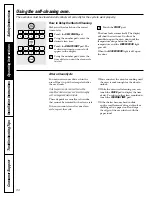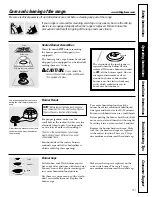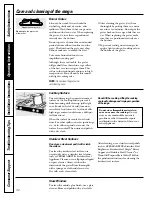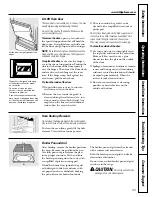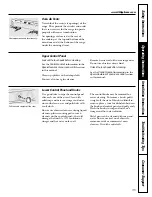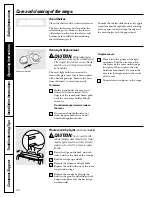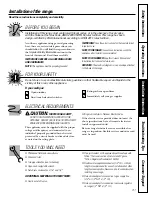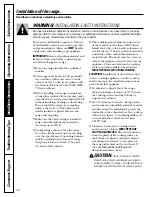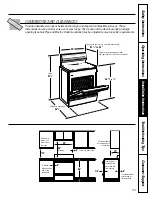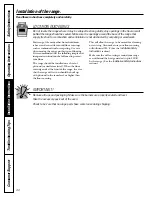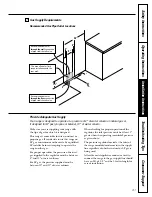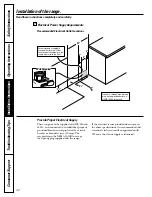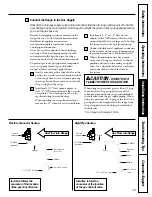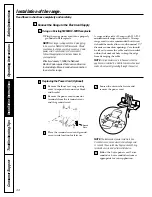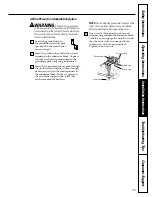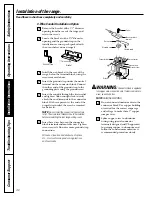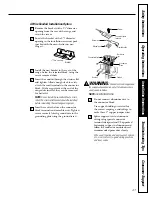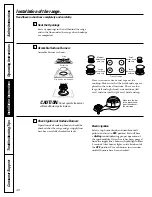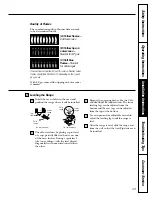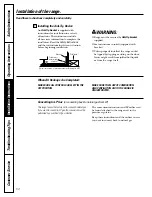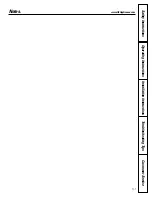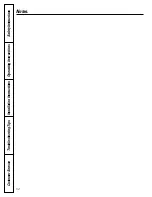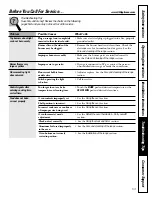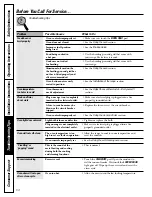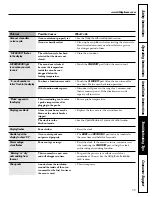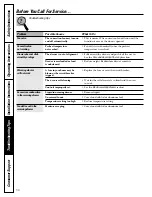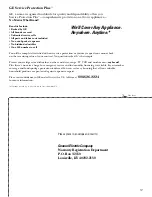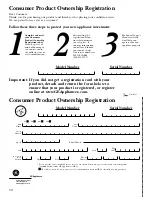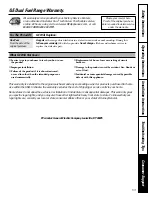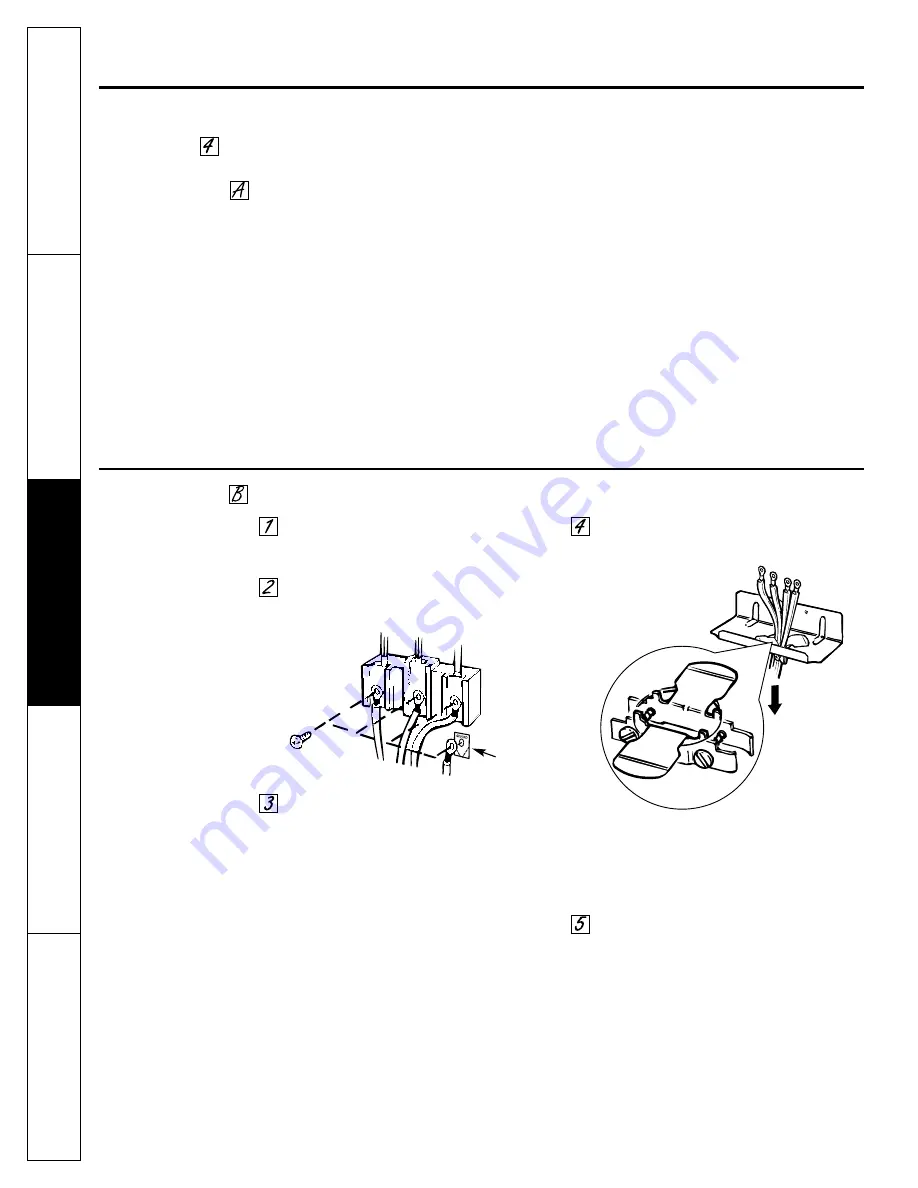
Replacing the Power Cord (Optional)
Remove the lower rear range wiring
cover to expose the connector block
and bracket.
Remove the power cord connector
terminals from the terminal screws
and the ground screw.
Place the terminal screws and ground
screw in safe location for later use.
Loosen the strain relief screws and
remove the power cord.
NOTE:
The replacement power cord must be a
3-conductor or a 4-conductor UL-listed range cord
or conduit. These cords may be provided with ring
terminals on wire and a strain relief device.
Follow the 3-wire power cord, 3-wire
conduit or 4-wire conduit sections as
appropriate for your application.
Operating Instructions
Safety Instructions
Installation Instructions
Tr
oubleshooting T
ips
Consumer Support
44
Read these instructions completely and carefully.
Installation of the range.
Connect the Range to the Electrical Supply
Using an Existing NEMA 14-50R Receptacle
■
Plug the range power cord into a properly
grounded wall receptacle.
NOTE:
Your range is shipped with a 4-prong plug
to be used in a NEMA 14-50R receptacle. Should
you choose to change your plug, use only a 3-wire
power cord, 3-wire conduit or 4-wire conduit.
Follow the appropriate instructions below for
your application.
Effective January 1, 1996, the National
Electric Code requires that new construction
(not existing) utilize a 4-conductor connection
to an electric range.
A range cord rated at 40 amps with 125/250
minimum volt range is required. A 50-amp
range cord is not recommended but if used,
it should be marked for use with nominal 1
3
⁄
8
″
diameter connection openings. Care should
be taken to center the cable and strain relief
within the knockout hole to keep the edge
from damaging the cable.
NOTE:
A 4-conductor cord is to be used when the
appliance is installed in a mobile home or when local
codes do not permit grounding through the neutral.
Ground
Plate

